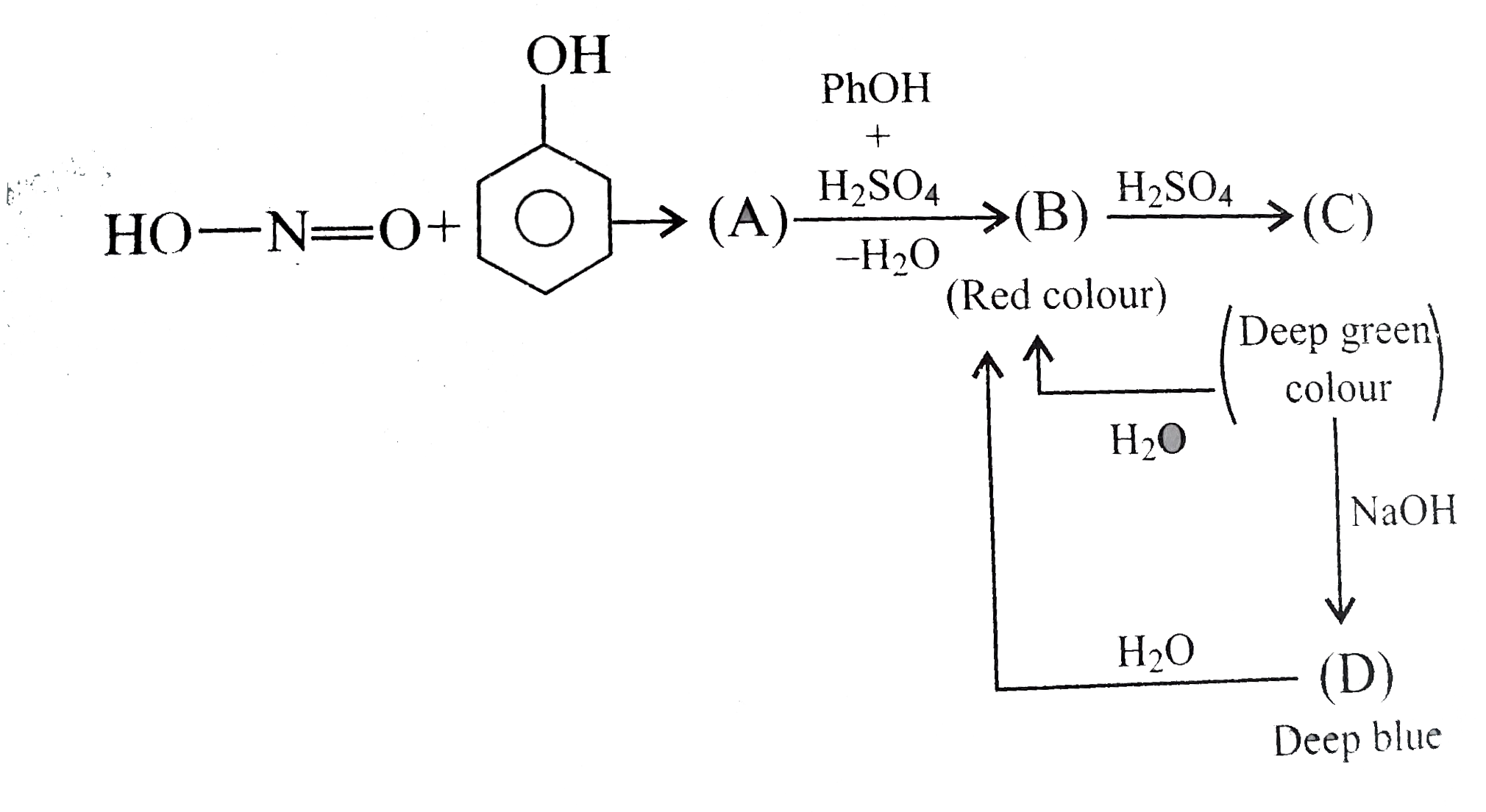Yellow colour of chromates changes to orange on acidification due to formation of:
Cr3+
Cr2(CO3)3
Cr2O2−7
CrO−4
The correct Answer is:C
To solve the question about the color change of chromates upon acidification, we can follow these steps:
1. Identify the Initial Species:
The question states that the yellow color of chromates changes to orange upon acidification. The chromate ion is represented as CrO2−4.
2. Understand the Color Change:
The yellow color of chromate ions (CrO2−4) is due to the presence of chromium in a +6 oxidation state. When acidified, this ion undergoes a transformation.
3. Write the Reaction:
The chromate ion reacts with hydrogen ions (H+) from the acid to form the dichromate ion (Cr2O2−7). The balanced reaction can be written as:
2CrO2−4+2H+→Cr2O2−7+H2O
4. Identify the Final Species:
The dichromate ion (Cr2O2−7) is orange in color. This explains the color change from yellow to orange when chromate ions are acidified.
5. Conclusion:
The formation of the dichromate ion (Cr2O2−7) is responsible for the observed color change. Therefore, the correct answer to the question is the dichromate ion.
Final Answer:
The yellow color of chromates changes to orange on acidification due to the formation of dichromate ion (Cr2O2−7).
---
The question states that the yellow color of chromates changes to orange upon acidification. The chromate ion is represented as CrO2−4.
The yellow color of chromate ions (CrO2−4) is due to the presence of chromium in a +6 oxidation state. When acidified, this ion undergoes a transformation.
The chromate ion reacts with hydrogen ions (H+) from the acid to form the dichromate ion (Cr2O2−7). The balanced reaction can be written as:
2CrO2−4+2H+→Cr2O2−7+H2O
The dichromate ion (Cr2O2−7) is orange in color. This explains the color change from yellow to orange when chromate ions are acidified.
The formation of the dichromate ion (Cr2O2−7) is responsible for the observed color change. Therefore, the correct answer to the question is the dichromate ion.
The yellow color of chromates changes to orange on acidification due to the formation of dichromate ion (Cr2O2−7).
Topper's Solved these Questions
- D BLOCK ELEMENTSBOOK - RESONANCE ENGLISHCHAPTER - D BLOCK ELEMENTSEXERCISE - EXERCISE-I PART-III
15 Videos
- D BLOCK ELEMENTSBOOK - RESONANCE ENGLISHCHAPTER - D BLOCK ELEMENTSEXERCISE - EXERCISE-2 PART-I
27 Videos
- D BLOCK ELEMENTSBOOK - RESONANCE ENGLISHCHAPTER - D BLOCK ELEMENTSEXERCISE - EXERCISE-I PART-I
40 Videos
- D & F BLOCK ELEMENTSBOOK - RESONANCE ENGLISHCHAPTER - D & F BLOCK ELEMENTSEXERCISE - ORGANIC CHEMISTRY(Aldehydes , Ketones, Carboxylic acid)
15 Videos
- DPPBOOK - RESONANCE ENGLISHCHAPTER - DPPEXERCISE - QUESTIONS
368 Videos
Similar Questions
Knowledge Check
Yellow coloured aquesous solution of sodium chromate changes to orange when acidified with sulphuric acid because
AH+ ions convert chromate ions to dichromate ionsBH+ ions react with sodium chromate to give sodium ions which turn solution orangeCCr3+ ions are liberated in the solution which turn the solution orangeDsodium hydroxide is formed during the reaction which imparts orange colour to the solution.The reaction of elemental sulphur with Grignard reagent followed by acidification leads to the formation of
AmercaptanBsulphoxideCthioetherDsulphonic acidThe yellow colour of urine is due to the presence of
AureaBuric acidCurochromeDbilirubin
Colour of the bead in borax bead testis mainly due to the formation of
View Solution
The red colour of compound (B) is due to the formation of:
View SolutionThe yellow colour of urine is due to the presence of
View SolutionThe yellow colour of urine is due to the presence of
View SolutionThe yellow colour solution of Na2CrO4 changes to orange red on passing CO2 gas due to the formation of :-
View Solution
